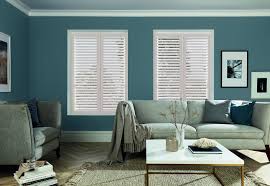Energy efficiency is no longer just a buzzword — it’s a practical consideration for Australian homeowners looking to reduce power bills, stay comfortable year-round, and make more sustainable living choices. One often overlooked contributor to a home’s overall efficiency is its window coverings. Among the many options available, shutters stand out not only for their timeless style but also for their ability to enhance insulation and light control. So, are shutters energy efficient? Let’s take a closer look.
What Makes a Window Treatment Energy Efficient?
When we talk about energy-efficient window treatments, we’re referring to how well they help regulate indoor temperatures. This means reducing heat gain during hot weather and minimising heat loss during cooler months. Since windows are one of the most common sources of thermal transfer in a home, the right covering can have a significant impact.
Effective energy-efficient window treatments act as barriers that slow down temperature changes, reduce reliance on heating and cooling systems, and create a more stable indoor environment.
How Shutters Help with Temperature Control
Shutters are particularly effective at creating an insulating layer between your window and your room. When closed, the solid structure of shutters helps reduce the amount of heat entering your home in summer while retaining warmth in winter. The adjustable louvres also allow you to fine-tune airflow and sunlight, making them versatile for changing conditions throughout the day.
In climates like the Gold Coast, where summers can be intense and humidity is a constant factor, this insulation and ventilation combination is especially valuable. Interior shutters help maintain a comfortable temperature without overworking your air conditioning system.
To explore a wide range of stylish and functional shutter options suited to local conditions, you can view the range of shutters Gold Coast selections available for both modern and classic homes.
Material Matters: Best Shutter Types for Insulation
Not all shutters are created equal when it comes to insulation. The material used plays a major role in how well the shutters regulate temperature:
- Timber shutters – Natural timber has excellent insulating properties. These shutters offer a warm, timeless look and perform particularly well in bedrooms and living areas.
- PVC shutters – Moisture-resistant and highly durable, PVC shutters are ideal for areas like bathrooms, kitchens, and coastal homes. They provide solid insulation without warping or cracking.
- Aluminium shutters – Typically used outdoors, aluminium shutters are more suited for weather protection and privacy. While not as insulating as timber or PVC, they offer durability and sun control for outdoor spaces.
Choosing the right material based on where the shutters will be installed helps maximise their energy-saving potential.
Shutters vs Other Window Furnishings
How do shutters compare with curtains or blinds when it comes to energy efficiency?
- Curtains: Thick, lined curtains can be very effective at reducing thermal transfer, but they often lack the adjustability that shutters provide. They also take up more space and may not suit all décor styles.
- Blinds: Blinds are often lightweight and less insulative than shutters. While they can control light, they generally don’t offer the same level of thermal protection.
- Double glazing: Pairing shutters with double-glazed windows can significantly boost energy performance — but shutters alone already offer a strong standalone benefit.
Overall, shutters strike a balance between insulation, light control, and aesthetic appeal, making them one of the most energy-efficient and stylish choices.
Additional Benefits That Contribute to Energy Savings
Beyond insulation, shutters offer several secondary benefits that contribute to improved energy use:
- Light control: Adjust the louvres to reduce glare and natural heat during the day without turning on lights or air conditioning.
- UV protection: Shield furniture, flooring, and artwork from fading, reducing the need for replacements over time.
- Ventilation control: Let fresh air in while keeping the sun out, which is particularly useful in subtropical regions like the Gold Coast.
These features make shutters not just a seasonal solution but an all-year-round investment in comfort and efficiency.
Custom Fit for Maximum Efficiency
For shutters to work effectively, they must be properly measured and installed. Custom-made shutters ensure a snug fit with no gaps that can compromise their performance. This close fit is especially important for reducing air leakage and enhancing insulation.
Floor-to-ceiling coverage and full window enclosure (particularly with plantation shutters) offer the best energy results. Reputable providers will include professional measuring and installation as part of the service.
Are Shutters a Worthwhile Investment?
While the initial cost of shutters can be higher than other window furnishings, the long-term benefits often outweigh the upfront expense. Energy savings, reduced wear on heating and cooling systems, increased property value, and years of durable performance make shutters a wise investment — especially in homes exposed to strong sun or varying temperatures.
On the Gold Coast, where weather conditions can shift from warm and sunny to humid and wet, shutters provide a reliable, stylish, and energy-smart solution.
Closing Thoughts
So, are shutters energy efficient? Absolutely. When thoughtfully chosen and professionally installed, shutters offer outstanding insulation, light control, and durability — all of which contribute to a more comfortable and energy-efficient home.


